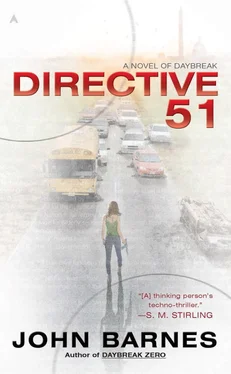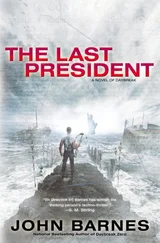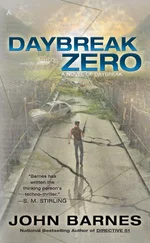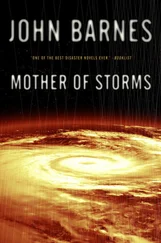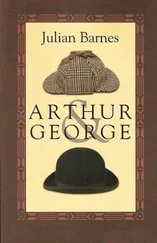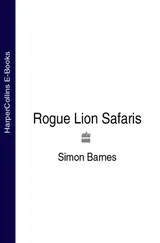“Me too. God I hope it has nothing to do with Daybreak.”
On I-90, Jason unfolded his laptop and made the free connection to IBIS, the chain of wireless stations that ran down the median. “Good news,” Jason said. “About every fifth or sixth wireless transceiver is down.”
Zach raised a fist in ironic salute, and said, “What’s the news?”
“I’ll have it up in a sec. The first thing we need after starting Daybreak is Internet access. Seems like a great prank of God.”
“Not God,” Zach said, quietly. “Someone who is often mistaken for Him, I think.”
ABOUT FIVE MINUTES LATER. WASHINGTON. DC. 9:15 P.M. EST. MONDAY. OCTOBER 28.
Something moved in Heather’s peripheral vision; a message from Browder had popped up:
smoke of plane crash poss=Na 2O, consistent w/eye&lung injuries. check for radiation esp. beta & hard gamma & for U or Pt. maybe i was wrong? maybe nuke on board?
Na: the chemical abbreviation for sodium. And Browder thought the mystery plume looked like smoke from burning sodium. She forwarded to Cameron right away, and a moment later her headset was live. “Heather, I’m patching through to Browder, and I’ve got four DoE guys and two hazmat people from EPA kibitzing in.”
“Right here and ready,” Heather said.
“All right, for the record, we have Browder and O’Grainne from Department of the Future; Caspar, Pellegrino, Murchison, and Oe from Department of Energy; and Smith and Svejk from EPA, and my iScribe is taking all this down. Very quick briefing: We’ve got air samples from the plumes, both the gray-white caustic one coming from the hot spots, and the black smoke from the main body of the burning fuselage. The gray-white caustic plume is almost pure disodium oxide dust, and the spectroscopic analysis on the bright yellow-white fires shows very bright lines for sodium and oxygen, so there’s no question that it’s burning sodium.
“However the disodium oxide is not at all radioactive—it’s sodium-23 with a trace of other isotopes, not radioactive sodium-24. This is consistent with Dr. Browder’s speculation that sodium was being carried on board as a radiological enhancer for a nuclear weapon, especially a fusion weapon, since they produce enough neutron flux to transmute several tons of sodium instantaneously. Any problems with my understanding of the science so far?”
“Oe, DoE.” It was an older man’s voice with that flat, clipped Californiamall accent that all the stars used to have. “We’ve always worried about sodium-24 more than any other enhancer because of its chemical activity and extreme radioactivity, and because with the short half-life, the more eco-conscious terrorists might feel better about using it, since the radioactive component goes down from pure to less than a part per million in about ten days.”
“Caspar, DoE. Concur. The only reason to be carrying that stuff was if they had a nuke on board they were planning to use; metallic sodium is hard to handle and dangerous to work with and there are much more effective ways to enhance a fire—powdered aluminum or magnesium would be way easier to handle and make ten times the mess, and besides, they were crashing an airliner, which is going to start a big fire anyway. So the only possible reason to go to all that expense, danger, and complexity was if they intended to convert it all to sodium-24 with a nuclear bomb.”
“Thank you,” Cam said. He sounded desperate. “And yet the other plume analysis shows no trace of any tritium or deuterium beyond ordinary background levels, no chemical traces of uranium or plutonium, and no unexpected radioactivity at all—the only radioactivity we’re getting is a very slight trace of americium, which is almost certainly from the on-board smoke detectors. Any further speculation in light of that? I confess I’m baffled, but I’m not a physicist or chemist.”
There was a long pause. “Browder, DoF. No uranium or plutonium means no fission trigger, as far as I know.”
“Oe, DoE, that’s correct.”
“Svejk, EPA. Any trace of lithium or beryllium? We might as well check all the commonly known fusible nuclei that we can.”
“A little bit, but the on-site assessor said that there’s enough in half a dozen modern laptops and the plane’s own computers to produce the quantity they are seeing.”
“Browder, DoF. All the fusible nuclei you can check? I assume that means you can’t check for helium?”
“Svejk, EPA. Not easily. But we can probably cross helium off the list because fusing helium-4 into carbon is so far beyond what can be done on Earth, and helium-3 is so scarce and hard to isolate.
“Caspar, DoE, concur. Also helium-3 is somewhat harder to work with than tritium or deuterium, to boot. If they were using helium-3, it would almost certainly be easier, cheaper, and more effective to use tritium.”
“Nonetheless,” Cam said, “I’m alerting the crews to watch out for a nuclear weapon in the wreckage. Anybody have anything they need to add before we end this call?”
On the screen, the burning sodium continued to light the site in eerie, dancing flames; network feed showed a swarm of talking heads, all trying to explain everything else to each other.
Heather messaged Browder: thx, good job, stay online, wl b long night.
He sent back: ^surest prediction DoF ever made.
ABOUT THE SAME TIME. YUMA. ARIZONA. 6:23 P.M. PST. MONDAY. OCTOBER 28.
Ysabel took the Yuma city bus to the mall and picked up the pack she’d left at the door of Sam’s Club that morning. The developmentally disabled guy at the service desk seemed to remember her, but maybe nobody would believe him, if anyone even thought to ask him anything.
She walked across the parking lot to the little tour company where she’d bought a pass for a cheapie three-day package that went down to a little bed-and-breakfast in Puerto Penasco. They promised you the fun of waking up “in a foreign country” the next morning.
She planned to set her clock and slip out of the bed-and-breakfast about an hour before dawn, when the third-class buses in the zocalo would be picking up hotel workers from the graveyard shift. She’d just get on whichever one was going the farthest south on Highway 2; from there, she could be lost among the peasants until Daybreak eliminated pursuit.
“Would you mind if I sit with you?”
Ysabel looked up to see the only other person under fifty on the bus. The girl had an awfully big backpack for a three-day trip; she wore baggy shorts and sandals with socks, and the super-retro WrapLens glasses that made you look like a giant insect, the early smart-lens glasses from back in the ’teens. She mumbled as she introduced herself, and Ysabel didn’t really catch her name. Oh, well, at least I remembered my alias is “Jane.”
The Bug-Faced Girl was off on her first vacation entirely on her own. “I’ve never crossed any border before, I’ve never gone anywhere by myself, and I’ve only really been to Kansas, Oklahoma, a ski resort in Colorado, and Urbana, Illinois, because my grandma lives there. So here I was with a real job, nobody I had to see or plan with, and I just decided I’d see some places I hadn’t seen before. So I got a two-week pass on Greyhound, and went out to see the beach in San Diego, and now I’m doing this side trip so I can see another beach and sort of have been in another country. I must seem like the biggest dork in the world to you.”
“Well, having seen more of the world, I know there are way bigger dorks.”
Bug-Eyed Nerdchick took a second to get it, then laughed. “My mother is so freaked; but I left San Diego yesterday, and I was nowhere near where Air Force Two crashed.”
Читать дальше
